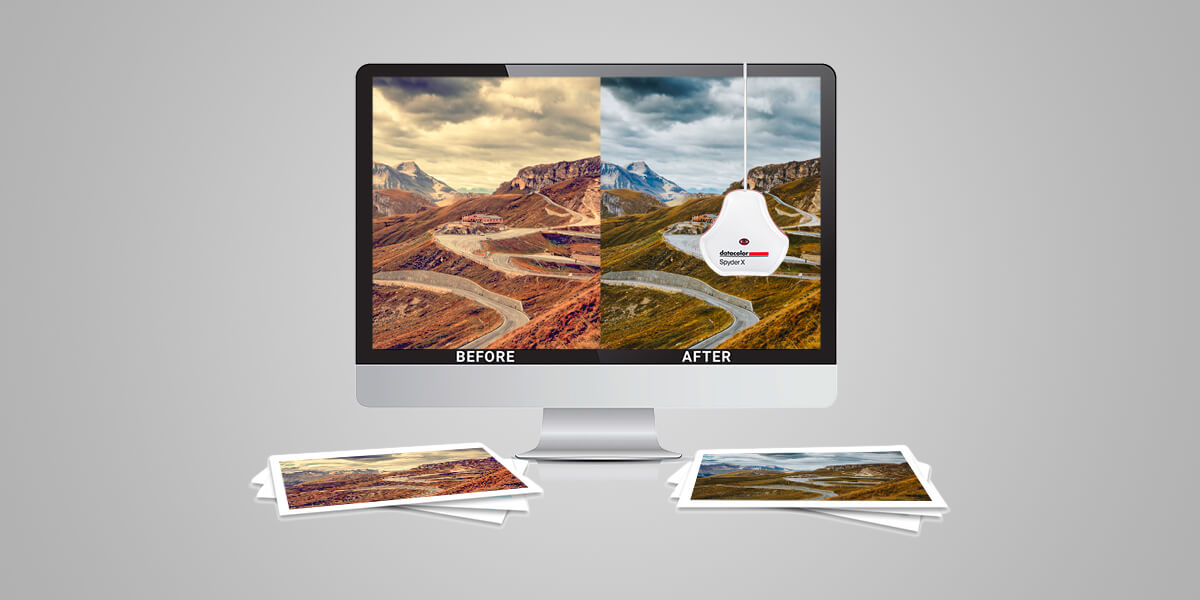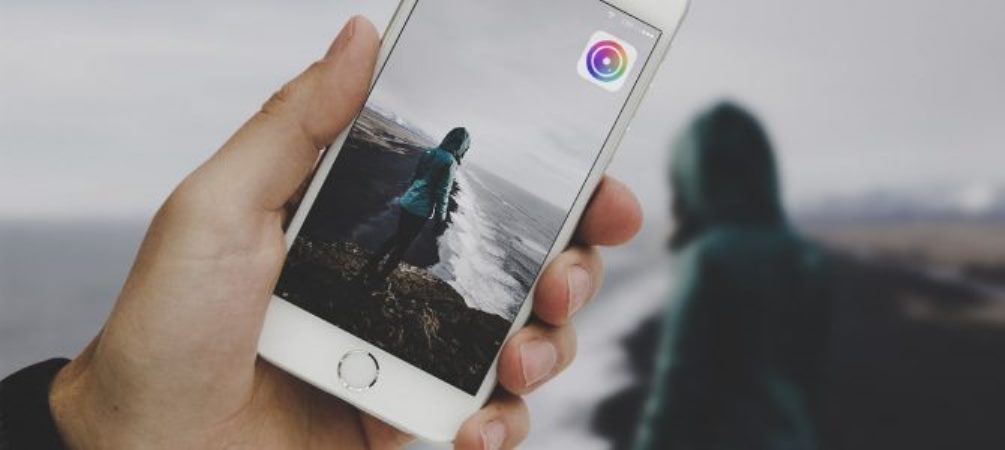- Home
- Services
- Portrait Retouching Services
- Wedding Photo Editing Services
- Color Correction Services
- Glamour Retouching Services
- Photo Retouching Services
- High End Photo Retouching Services
- Background Removal Services
- Photo Correction Services
- Photo Post Processing Services
- Photo Enhancement Services
- Photo Post Production Services
- Photo Culling Services
- Pricing
- Portfolio
- Shop
- Blog
- Login
How to Price Photography for Maximum Profit in 2026
-
Juli Allen
-
June 15, 2023
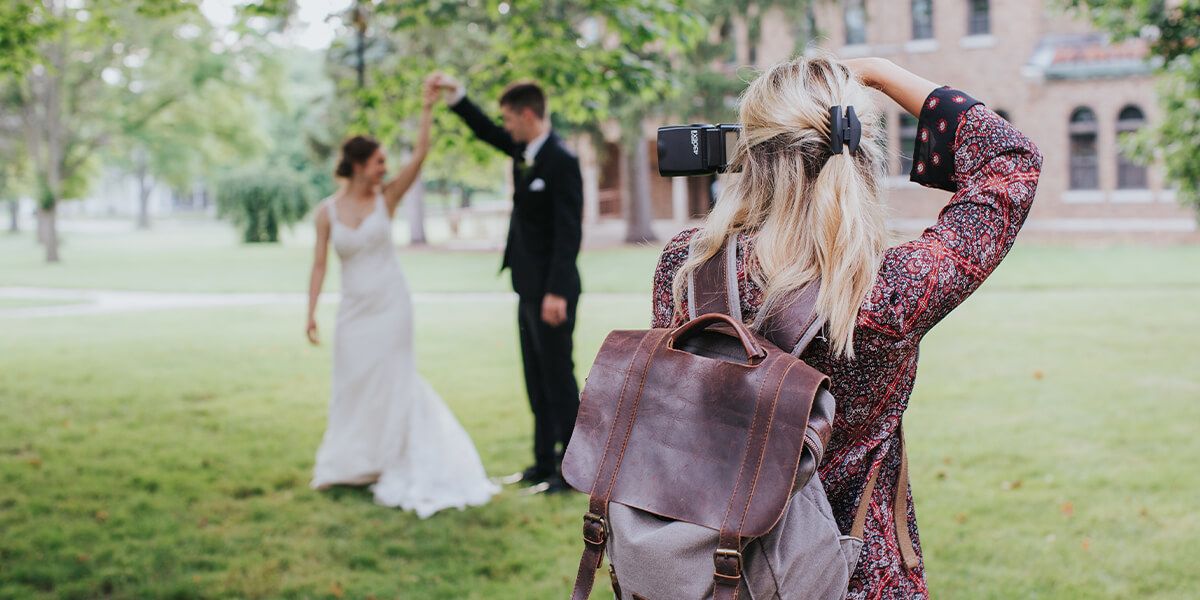
Knowing how to price photography based on your time, effort, and market value is crucial for becoming successful in this business. WeEdit.Photos experts prepared a list of aspects that should be taken into account when developing your photography pricing model.
This guide created for both beginning and professional shooters will provide valuable knowledge and tools that will help you get every dollar you’re worth. Read it attentively to find out how much you should charge for your job and get the profit you deserve.
Learn why a budding photographer should charge $25-75 per hour, whereas experienced shooters can safely ask $500+ for their services.
Popular Pricing Models & What Matters Setting Your Price
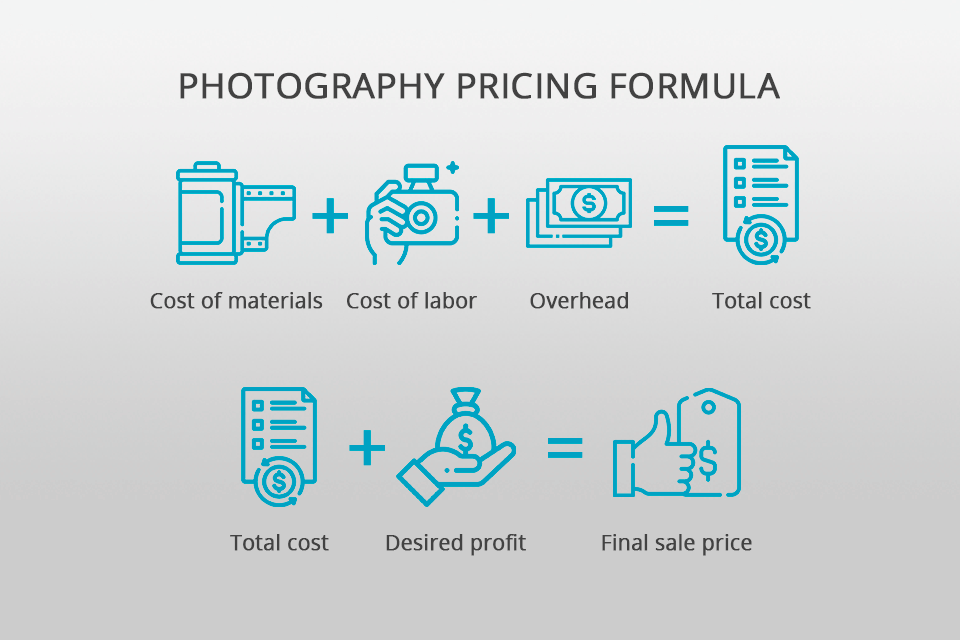
As soon as your pricing policy is formed, think of the most appropriate way of presenting this info to a client. So the next part of this photographer pricing guide goes over the most popular pricing models that you can benefit from to define the most convenient method to quote for your photoshoots.
Day rate. According to this model, a photographer takes a fixed fee for a full day or other long period of time. No matter how many hours it took you to perform the job, the photographer’s fee remains unchanged.
This payment method is an ideal option for professionals who take on projects that require extensive coverage or when it is difficult to define the number of hours needed to perform some specific job. This model simplifies the cooperation of a shooter with a client.
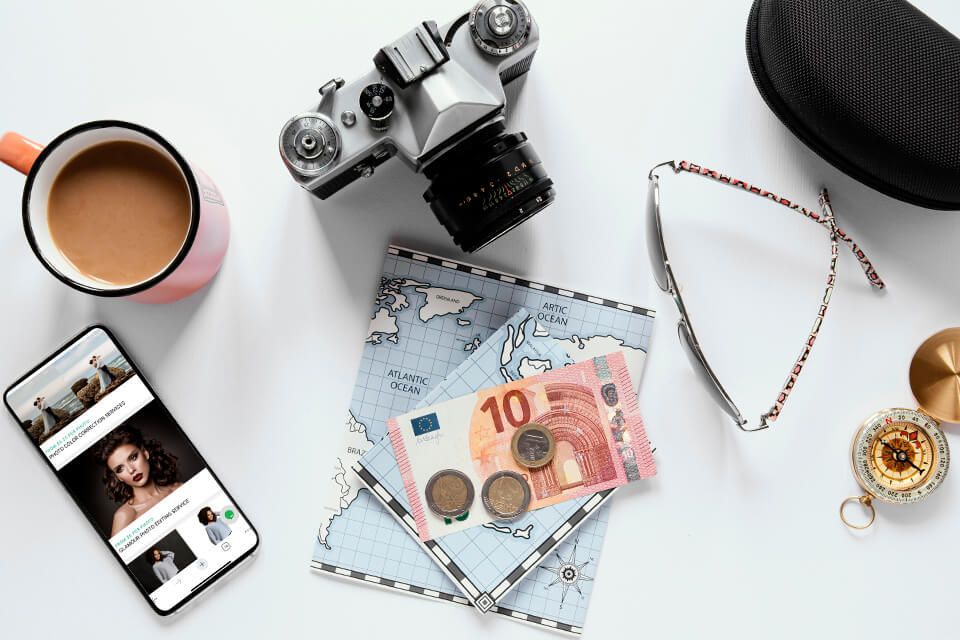
Project-based. This pricing approach is where you charge a fixed rate for completing a specific project or service. Regardless of the time spent on a photo session, and invested resources, the cost of the project remains consistent. This model is the best solution when you’ve already defined the scope of work and deliverables, so both parties know the exact price of a project.
Hourly. With an hourly pricing approach, a photographer sets an hourly rate and charges clients for every hour worked. This model is a win-win option for even photographers or photojournalists as they never know how much time is needed to perform the assignment.
Package Pricing. This approach involves offering clients your services in the form of a package that has a fixed price. Each package should contain a specific range of assignments you’ll fulfill in accordance with different client requirements and budgets. For instance, you should indicate the exact time you are ready to spend doing a specific job and the number of photos you’ll retouch if a client orders a basic plan.
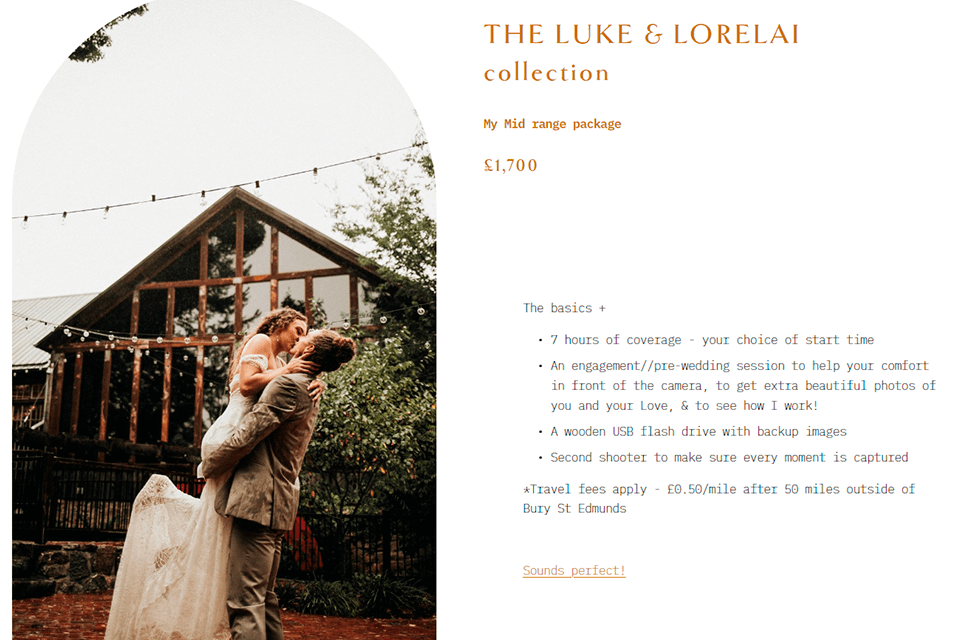
Beyond the extended working hours and more edited images, a premium package may include some extras like additional prints, albums, etc. This pricing model is the clearest one and most convenient for a photographer.
Licensing fees. These are actually fees a photographer gets for the use of his/her images. The cost depends on the amount of exposure and the time the pics will be in use. This pricing model is only suitable for big projects, as incorporating such a paying method when working with smaller clients will only cause confusion.
1. Experience
When defining photography prices, your level of experience and expertise is one of the most important aspects to consider. Newcomers should offer affordable prices to build up a clientele, whereas accomplished professionals can establish heavier prices for their services.
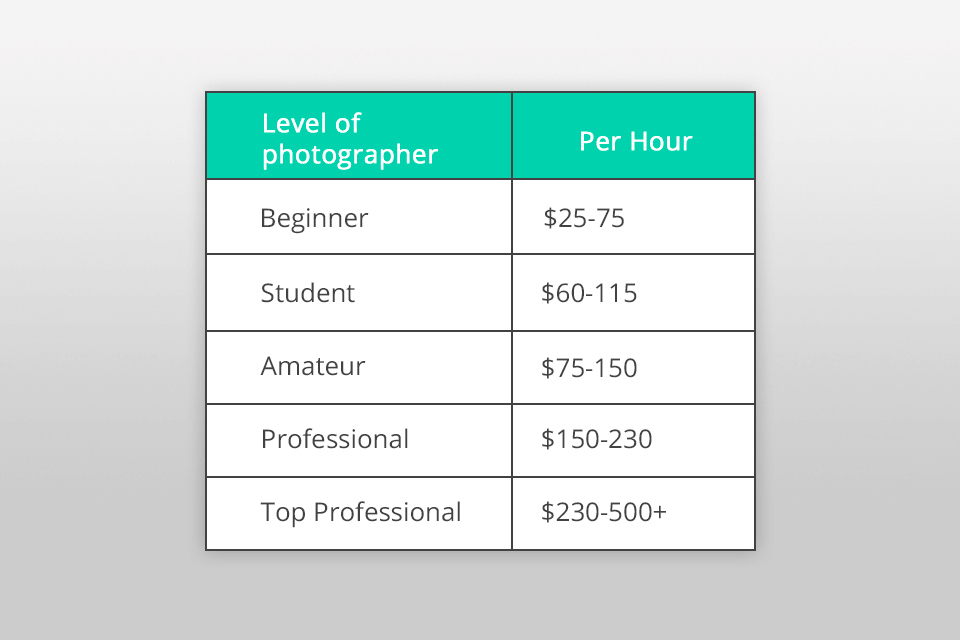
If you are a beginner in a photography niche, ask between $25-$75/hr for your photo shoots. Photography students can charge more as they have some formal training.
Depending on the time they have already spent on their study, the rate may vary from $60-$115/hr. If you have been active in the photography field for some years and consider yourself a real professional, you can charge $230-$500+/hr.
2. Cost of Labor
Many photographers unintentionally undervalue the cost of their time and labor, and thus fail to earn adequately.
Calculate how many hours you’ll need to perform a specific type of job and reflect it in the total cost of your services. Take into account the time needed for the preparation, the actual photoshoot, post-production, communication with a customer, etc. Consider every minute you spend doing both on-site and off-site work to define your decent pay.
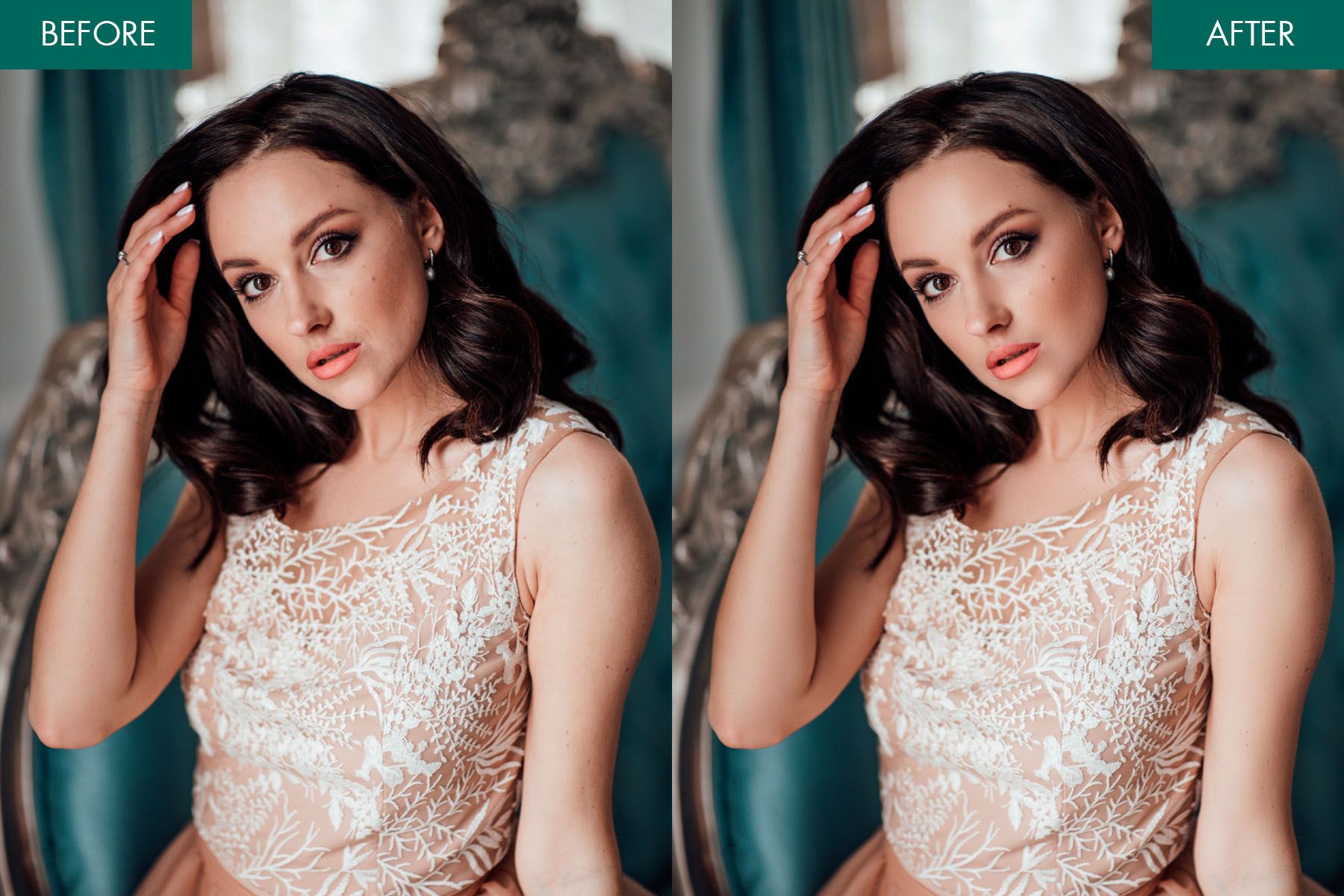
To accelerate your workflow, turn to a photo editing service, and get perfect-looking pics in a flash. Professional retouchers can correct colors and exposure, refine skin, reshape objects, and upgrade your images with original effects delivering eye-grabbing results. You will be glad to find out that they offer affordable photo editing prices and are ready to satisfy all your needs and wishes.
3. Genre
Photography pricing also depends on photography styles, a shooter works in. If you specialize in a specific genre, you can safely set a higher rate for your services. For example, seasoned wedding photographers usually make more money than general portrait shooters.
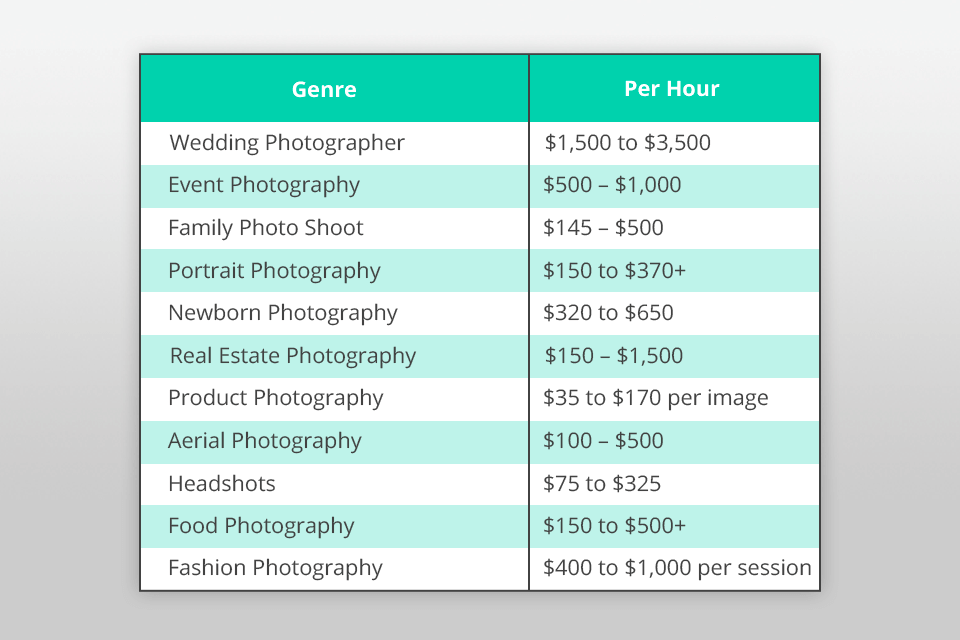
As wedding photographers conduct a photo session of a one-time event, filled with important and memorable moments, any mistake can lead to a real disaster. Generally, wedding shooters charge around $2,000 per shoot, whereas those who take portrait photos and print them usually earn between $150-300. The profit of event photographers is around $200-$500 for 1 hour of their work.
4. Competitor Analysis
To form photography prices, it would be reasonable to conduct some market research within your photography niche to see your competitors’ pricing models. Consider those shooters who have a similar level of experience and check how much they charge for their services.
If your research showed that you offer more than your rivals, do not be afraid of setting a higher price for your photo sessions. Being aware of the prices in your local market is a sure way to gain the profit you really deserve.
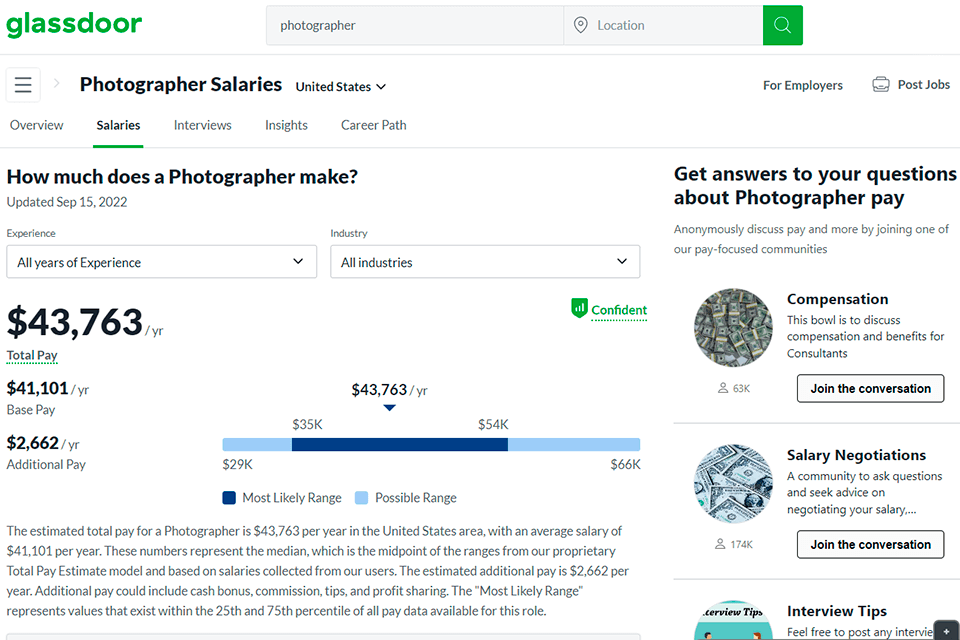
Visiting such paid websites as Payscale will provide you with a valuable inside into your competitors’ pricing policy. Enter “photographer” into the search field to discover an income scale in your area. It would be also a great idea to check free recruiting sites such as Glassdoor and Indeed, which also provide info on how much the photographers charge.
5. Price and Quality of Equipment
The quality of photography equipment like lenses, lighting, and other gear impacts the price considerably. For example, portrait photographers use high-quality equipment to take marvelous shots, so their rates are usually high.
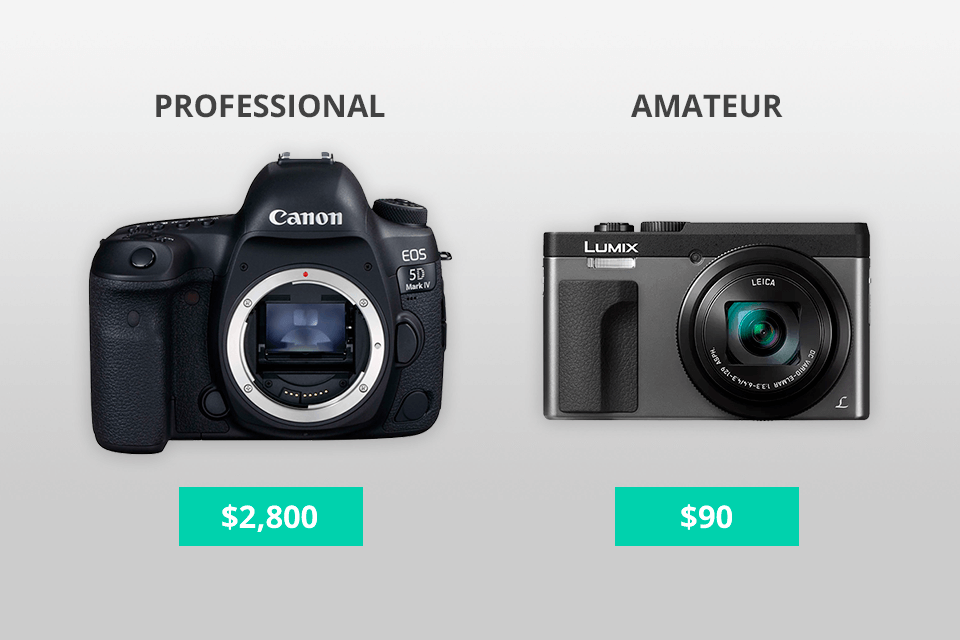
If you print photos delivering them in a form of a photo book, for example, the pricing will also differ, as nowadays most shooters share the resulting pics with clients as standard digital files. Besides, photographers who work with an analog camera also charge more.
6. Target Audience
Knowing your target audience is what lets you define the most reasonable prices for your services. Think of such criteria as age, gender, location income, interests, and preferences of your potential clients. Being able to identify your ideal clients will let you develop a perfect pricing strategy.

If you are focusing on people with an income above average or you are eager to shoot celebrity weddings, your rate should be higher in comparison to other photographers who focus on the budget segment. On the other hand, if you want to serve clients with limited financial recourses, your prices should be more affordable.
7. Overhead Costs
Indirect expenses needed to run your photography business including money spent on renting a studio, maintenance equipment, insurance, website hosting, advertising, etc. should be also considered when forming photography pricing.
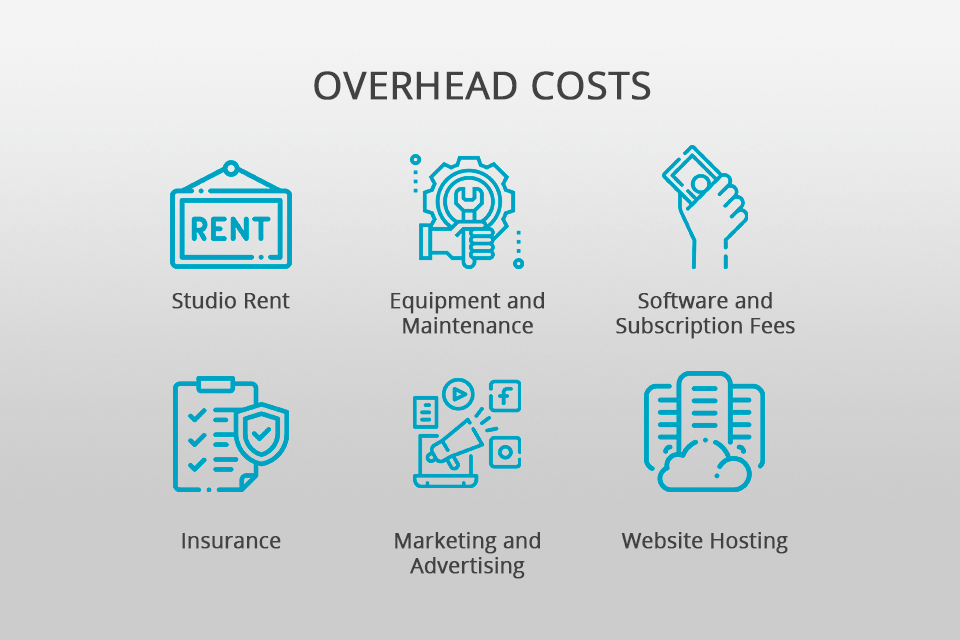
Besides, lens calibration, sensor cleaning, repairs, servicing, and replacement of damaged parts also involve expenses. Moreover, as photo editing software for photographers is constantly upgraded to meet the increasing demands of high-resolution files, the cost of your services should reflect it as well.
Overhead costs also include the price of outsourcing your photos to retouchers and software subscriptions like Adobe Creative Cloud for editing. Try to divide these costs among your customers to define the part of each project that covers such expenses.
8. Travel Expenses
Each photography contract template contains a travel expenses paragraph. If you are going to conduct a photoshoot far from your district, you should include the cost of transportation in the overall price.
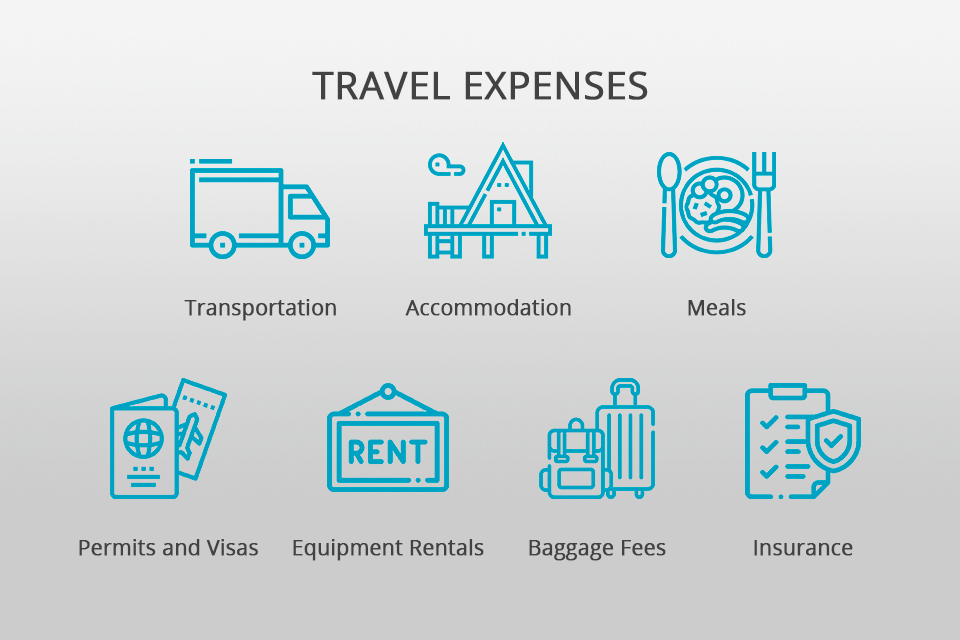
Calculate how much you’ve splurged on train tickets, fuel, accommodation, and food (like meals purchased in a café or grocery store) to define the amount of money you had to spend extra. By the way, sometimes photographers should travel abroad, so they include the fees for visas in the final price as well.
FAQ
- Is it a good idea to share my rates publicly?
Sharing your photography pricing in public is a good idea, which will simplify your life greatly. By seeing your pricing, the potential clients will decide whether they want to contact you and order your services or not on the spot. So, a person that gets in touch with you is ready to hire you for his/her photoshoot for sure.
- Is it appropriate to ask clients for a deposit?
There is nothing shameful in asking your customers for a deposit to secure a specific date and time for their photoshoots. Moreover, notify a client that the deposit won’t be returned if he/she does not show up for a session.
- Can you name a good profit margin for shooters?
To keep your business successful, your income should be at least 35% of your gross sales. Although 50% is an industry average, this number is not constant and depends on the project. For example, a photographer who wants to change his/her specialization can lower the cost of his/her service to attract clients.
- How can I define licensing fees?
Getty Image License Calculator is the most convenient way for performing this task. Provide the tool with some details like the intended use of a pic and the market it will be used for and learn its approximate licensing fee in an instant. To get a more accurate cost, compare the data delivered by the previous tool with the estimated cost offered by AOP (The Association of Photographers) calculator.
- How do I test my pricing approach?
One of the most effective ways of checking whether your pricing model works is to put up photography pricing list examples on your website and see how many clients will contact you. If you receive no order for a long time, your prices are likely to be high and should be lowered.
- Weedit.Photos Blog
- How To Guides
- How to Price Photography for Maximum Profit in 2026
